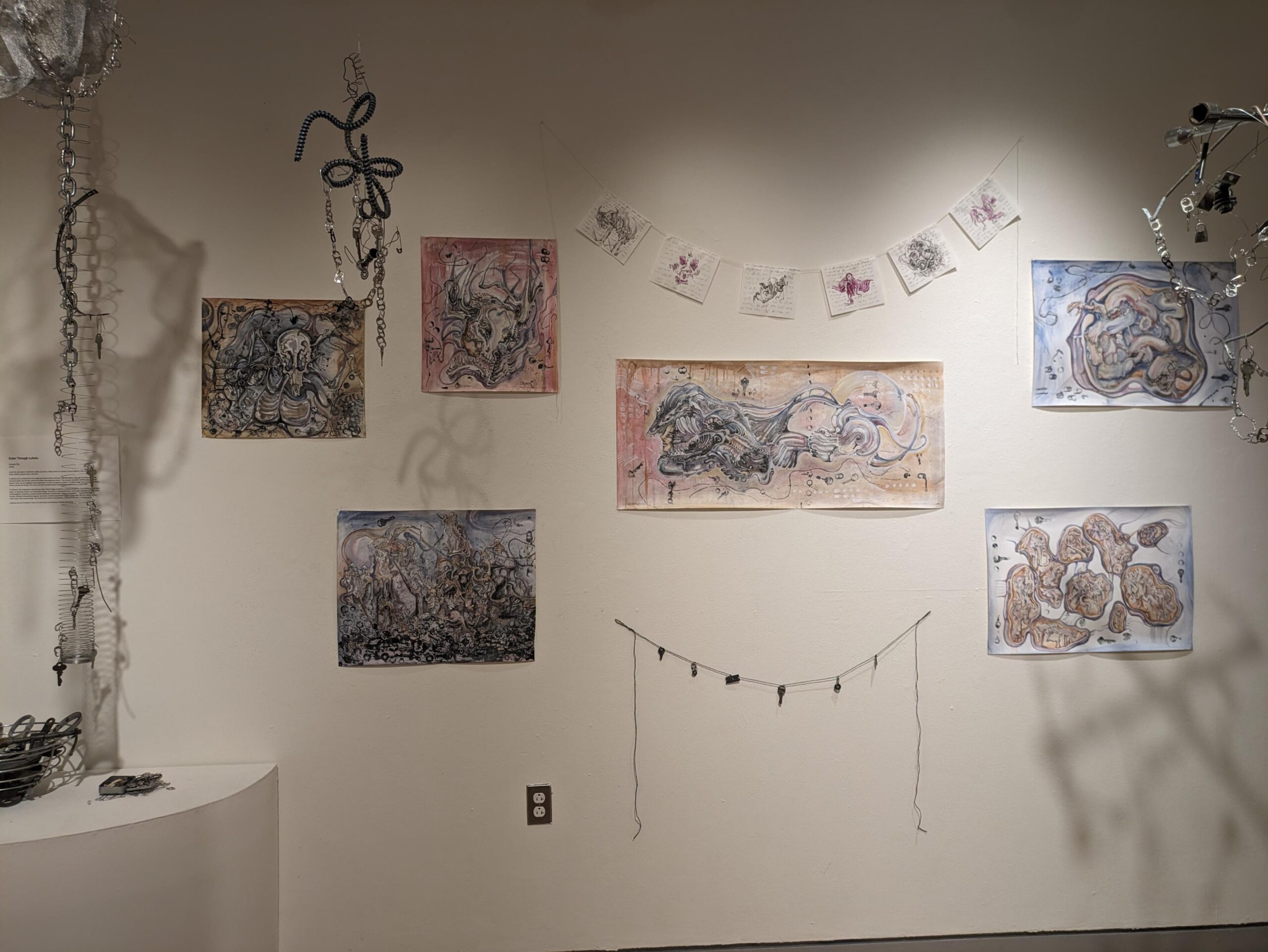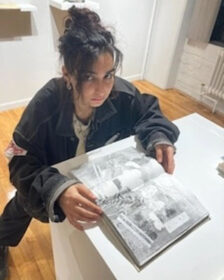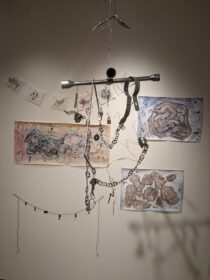‘I love the idea of dreaming’


Root kinetics. Printmaking. Radical abstraction. Building the world. These concepts are linked in the work of Ursula Zia ’24, who graduated with degrees in studio art and global environmental studies.
Zia’s recent project was a dreamscape based in the fermentation process, created for their studio art senior thesis show, Fluid. “I love dreams and the idea of dreaming,” Zia says. “One thing that’s been inspiring me recently is this idea of the lullaby as this gateway between sleep and dreams. It’s almost a sense of control and giving up control, and it’s also the intersection of solace and horror.”
A spring semester tour of Zia’s studio in the basement of Estabrook Hall felt like entering an alternate dimension. Edges of rice paper sheets were pinned delicately to the wall and a stretch of rice paper unfurled on the floor offered a study of various organic themes in ink and watercolor.
“I feel like I’m trying to define a sense of being outside of the body,” Zia says. “It’s almost like our existence is just a variety of different experiences that have come together, so are we an individual? Are we a collective?”
Zia is a self-described “vessel for radical abstraction” as a painter, printmaker, and poet. Last summer, Zia worked with the Center for Book Arts through the Steinbrecher Fellowship to create an art book titled “Root Kinetics,” which highlights the connections between humans and the Earth. They are now working to digitize the book. Zia initially conceived Root Kinetics as a multimedia exhibition.
 “Root kinetics is our sense of purpose, home, and self,” Zia notes. “Our roots are in motion and influenced by internal and external forces.”
“Root kinetics is our sense of purpose, home, and self,” Zia notes. “Our roots are in motion and influenced by internal and external forces.”
Zia cites professors Mandy Guttman-Gonzales, Phil Lemos, Jan Johnson, Antonio Fonseca, and Jeff Noh as key advisors on the Root Kinetics display, senior thesis, and the full-length collection of written work, and says they have offered important perspectives on other individual art pieces as well as career strategies.
Zia hopes one day to open an artists’ collective, describing the process of community printmaking as “deeply existential.”
“Every time we walk, we make a print,” they say. “Everything we do in the world, everything we touch, is a print, or a mark.” Life, according to Zia, is about the prints you make.


